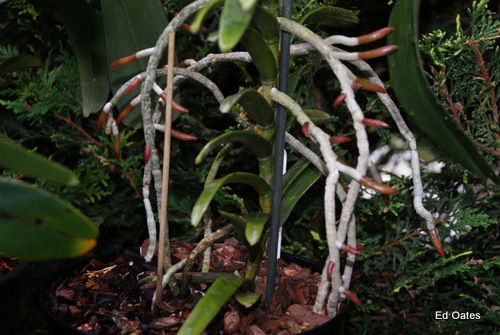I agree with this. Water does not cause disease, it can only assist it. My orchids in the shade house outside never get attacked by pathogens. In summer - and sometimes even in winter -I water late in the day. 4 or 5 pm and they remain wet all night unless it's windy.
The big difference is air movement and I suspect not just air movement but air exchange is also involved.
Unless you are rich, it is too expensive to move so much air and heat introduced air into a green house.
That's why so many tons of leaf fungicides are sold every year.
I think perhaps the volume x the time period of water falling on the plants in the habitat may also play a part.
When it rains in the habitat, the plants are showered for sometimes hours.
In other words they are constantly washed so what chance do pathogens have of building numbers?
Who here overhead waters their plants for 3 or 5 hours non stop and then follows that up with 12 hours of strong wind from gigantic fans connected to V8 engines?




